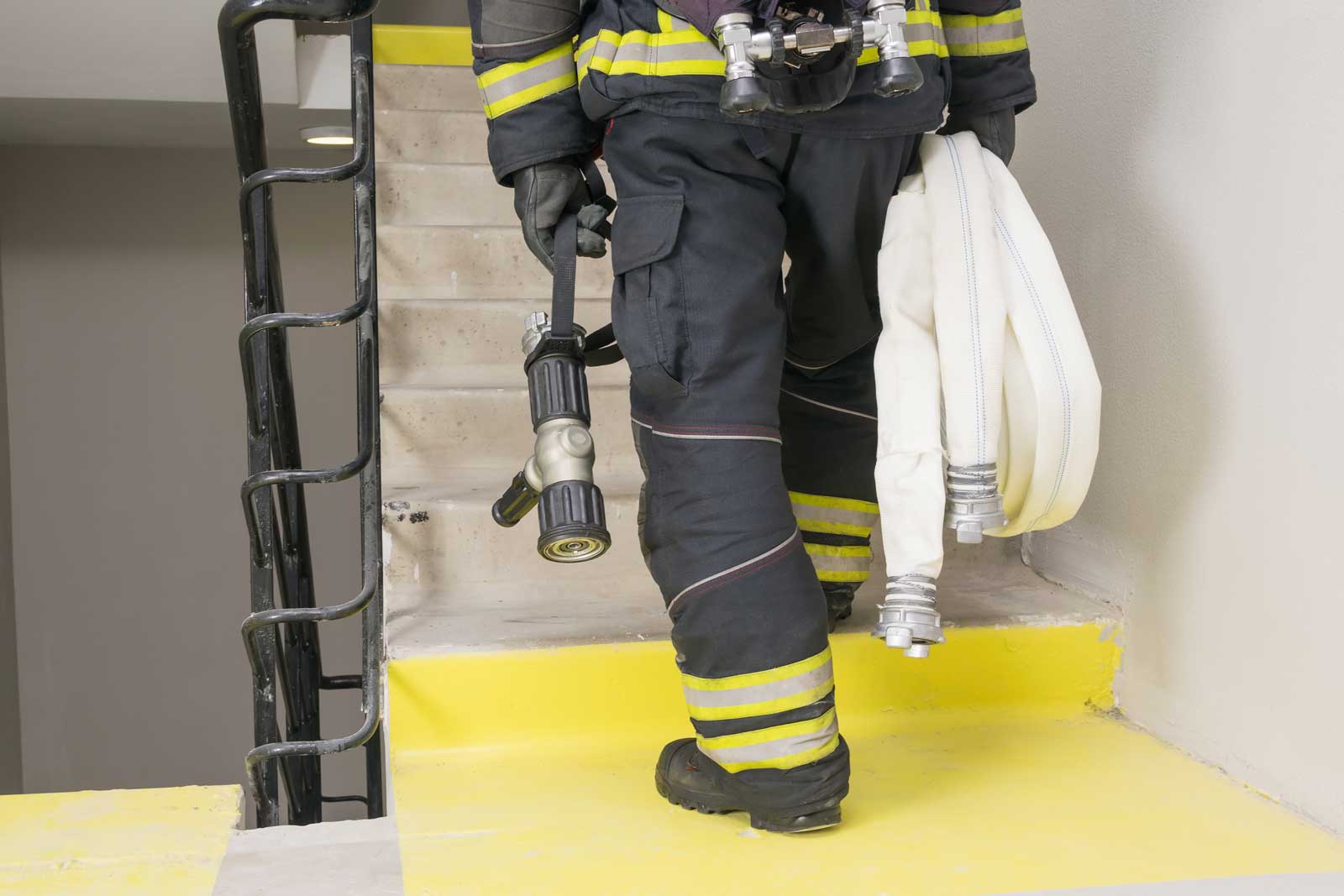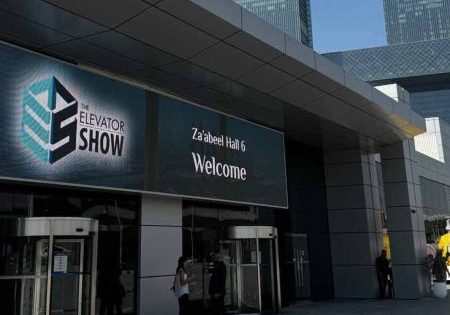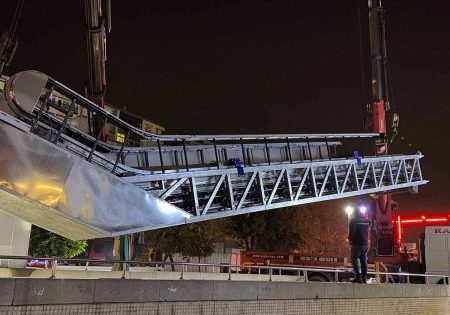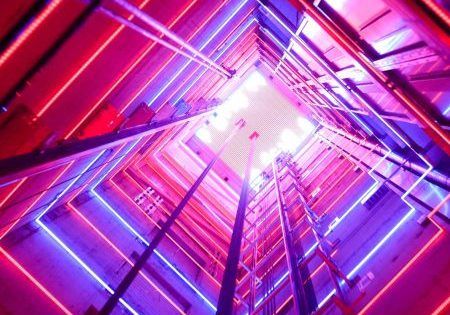Opinions on Life in Buildings During Emergencies Goal
Sep 9, 2025

Accessibility and Availability in Buildings (Elevator-Supported Evacuation Systems)
by Serdar Tavaslıoğlu
As cultural development increases in urbanization, the necessary demands to improve people’s quality of life have also begun to increase. Initially used only for vertical transportation and cargo transport, elevators have come to be used for comfort as well as quality of life has increased. So much so that at a certain point, they became an indispensable part of life and began to be used even in single-unit dwellings. One of the developments resulting from the increase in living standards is the measures taken regarding disabled access. It has been accepted that disabled people are also part of society and their rights to life are at least as important as those of other people. Access requirements for disabled people have been made mandatory in zoning regulations.
“PLANNED AREAS ZONING REGULATIONS
Elevators
ARTICLE 34– (1) Except for single-unit dwellings, elevators must be installed in buildings that are inhabited and/or have three or more floors according to the zoning plan. Elevators may also be installed in buildings with fewer floors.
(9) Accessible access to elevators must be provided from the building entrance in accordance with accessibility standards.
(10) Elevators must be equipped with the necessary hardware that complies with accessibility standards.
Building entrances and ramps
ARTICLE 30– (1) The width of the building entrance corridor, up to the main staircase and elevator, shall be at least 2.20 meters in public buildings and at least 1.50 meters in other buildings.
These conditions are intended to ensure that people with disabilities can easily access their apartments. The term “disabled” should not be limited to people who use wheelchairs. The disabled comprise a broad spectrum, including the elderly, pregnant women, mothers with children, the injured, those with physical and mental disabilities, and those who have undergone surgery. This is a situation that every person may encounter at least once in their lifetime and is not a remote possibility. Wishing people a healthy old age is a sign of good will, but ultimately leads to the creation of a disability. Accessibility is defined as enabling these individuals, who generally comprise approximately 10-12% of the population, to reach their homes and expand their living spaces, with the goal of allowing them to live comfortably in society, free from restrictions.
However, under today’s conditions, accessibility alone should not be considered a sufficient approach. The new goal should be to ensure “reachability” in addition to accessibility. In any unexpected situation (such as fire, earthquake, sabotage), rescue teams must be able to reach people whose homes are on the upper floors of buildings. It is no coincidence that lives are lost in such buildings during every fire. We can always encounter tragic losses, such as those in the Bolu hotel fire and the Ankara Tower fire. Unless such buildings are properly equipped, loss of life will be inevitable. Accessibility and reachability must both be ensured for building life. An approach such as “if we can’t bring it down, let’s not put it up” can be accepted as a target for rule-makers to consider.
A: FIRE SITUATION
The current regulations generally require people to evacuate via staircases during a fire, with the fire department responding to the fire from outside. The highest portable intervention ladder available to the fire department at the time was accepted as the limit for high-rise buildings, and an emergency elevator (fire department elevator) became mandatory above 51.50 m. However, these assumptions need to be reviewed.
1. The image to the right shows people descending the stairs and firefighters ascending the stairs in a building where a fire scenario is being implemented. Extremely calm and young people are making way for the firefighters, sharing the stairs with them. In reality, the situation is very different. People in a state of panic rush to the stairs without recognizing anyone, stairwells become blocked by physically limited individuals, and it takes much longer than normal to evacuate the building. During this time, it is not possible for the fire department to reach the scene of the fire, nor is it possible for the elderly and disabled to descend.
2. All firefighters know that intervening in a fire in a high-rise building from outside the building cannot be the primary method of intervention; fires in buildings must essentially be tackled from within. Intervening in a building fire from outside has the same effect as intervening in a forest fire from the air; in both cases, it is not sufficient on its own to extinguish the fire.
a. Breaking the environmentally reinforced glass used in high-rise buildings (heat-insulated glass is used, and laminated outer glass and tempered inner glass are applied), cleaning the frame and entering is not an easy task.
b. The source of the fire cannot be determined from the outside, so it is unlikely that the source of the fire can be tackled from the outside.
c. Working on a ladder at this height, in smoky conditions, at night, or in windy or rainy weather is neither efficient nor safe.
d. Under these conditions, it is very difficult to get untrained people from the window to the ladder and evacuate them at such heights. Getting disabled people from the window to the ladder is not easy at all.
e. It is not always possible to position the fire truck around the building as desired, and vehicles often cannot easily reach the desired points in the fire zone.
f. It is generally not possible for vehicles carrying such large ladders to reach the burning building in time in city traffic.
3. Even for a healthy person, it is not possible to directly descend or ascend 17-18 flights of stairs in a normal, stress-free environment. People whose knees are not accustomed to this height will lock up on these staircases. This is a situation that even elevator operators struggle with. Evacuation using this method is not possible for the elderly, disabled, injured or sick.
FIRE SITUATION ASSESSMENT:
With the latest changes, buildings used as residences can now house offices for doctors, lawyers and accountants. Therefore, it is not possible to classify these structures solely as residential. This definition should be included in the general definition of “buildings with three or more floors according to the application zoning plan, except for single-unit dwellings” within the definition of planned areas in the Zoning Regulations. These buildings are now open to the public.
The definitions in the TYPE ZONING REGULATIONS FOR PLANNED AREAS accept the values that form the basis of many different national regulations. In this regulation, it is of great importance for life safety that all structures with a building height exceeding 21.50 m or a structure height exceeding 30.50 m are considered High-Rise Buildings and that emergency elevatorsare made mandatory in these buildings, as is the case in other Country Regulations. At the building heights specified for high-rise buildings, it is not feasible for the fire department to intervene in a fire in the building from outside or by walking up the stairs. In the event of a fire, the fire department must be able to reach the scene of the fire safely. At this height, the evacuation of normal people via stairs and the evacuation of a small number of disabled people via emergency elevators is acceptable. After a building height of 36.50 m, it is not possible to both respond to a fire and evacuate disabled persons using only the emergency elevator. As the number of disabled people in the building increases to 10-12%, the fire department also needs the emergency elevator more. Therefore, for buildings with a height of 36.50 m and a structure height of 45.50 m or more, a second elevator, in addition to the emergency elevator, should be designed asan evacuation elevator.
Elevators to be used for evacuation during a fire must comply with the “TSE CEN/TS 81-76 Elevators – Safety rules for construction and installation – Special applications for passenger and freight elevators – Section 76: Evacuation of disabled passengers using elevators” standard. Elevators that do not comply with this standard cannot be used for evacuation during a fire. This standard defines the characteristics of elevators that can be used to evacuate injured and disabled people during a fire. Making such elevators mandatory in very tall buildings, hotels, hospitals and public buildings will greatly contribute to building safety and life safety. Elevators to be used for the evacuation of disabled, elderly, bedridden, hospitalized and physically or mentally impaired individuals on floors above the fire floor can only be used if the EN 81-76 standard requirements are met. Regular elevators should not be used during a fire.
In Very Tall Buildings with a building height exceeding 51.50 m or a structure height exceeding 60.50 m, the presence of multiple emergency elevators and the use of sufficient evacuation elevators appropriate to the building density can prevent many fatal incidents. At this height, it is not possible for the elderly and disabled to evacuate using the emergency elevator during a fire. Naturally, while the fire department is fighting the fire, it does not consider sending the elevator for evacuation, which would leave itself exposed. Designing two emergency elevators at a distance from each other increases the possibility of two-centered evacuation and intervention. The number of evacuation elevators should be determined according to the evacuation time of disabled and elderly people in the building. Assuming that 10-12% of the people in a building are disabled and elderly, evacuation elevators should be able to evacuate this number of people during a fire.
Evacuation from the building should be a specially planned activity, with the people to be rescued from where and from which floor defined in advance and programmed by the building management. It is not possible for the fire department arriving at the building for the first time to know and do this. In very high-rise buildings, it should be mandatory to prepare disabled positions and fire rescue instructions and to provide training. These procedures must be conducted at least once a year in every fire drill scenario.
In many European countries, the high-rise building limit is set at lower heights. In the UK, it starts at 14 m, in Germany at 22 m, and the highest limit is applied in Belgium at 25 m. The European average is considered to be 18 m (according to ChatGPT). In the U.S., the National Fire Protection Association (NFPA) defines a high-rise building as one that is 75 ft (23 m) or higher, or approximately 7 stories. The number of emergency elevators required for subsequent floors is determined based on the building’s density. In Singapore, one is required after 24 m(Singapore Civil Defence Force SCDF), and in New Zealand, a second emergency elevator is mandatory after 60 m, even if the density is sufficient (Fire and Emergency NZ Regulations 2018). There are many more examples.
FIRE BEHAVIOR ASSESSMENT OF ELEVATORS IN FIRE REGULATIONS
ARTICLE 62- “(5) Elevators used in high-rise buildings and public buildings must comply with the following principles:
a) Elevators must be designed to automatically return to the emergency exit floor and remain with their doors open, regardless of their direction, upon receiving a fire alarm. However, elevators must also be equipped with an electrical system that can be used by authorized personnel when necessary.”
The phrase “Elevators must also have an electrical system that can be used by authorized personnel when necessary” must be clearly defined. If an evacuation elevator is to be defined here, it must comply with the requirements of the EN 81-76 standard mentioned above. Otherwise, the elevators cannot be used during a fire. If the elevator in question is an emergency elevator, then an emergency elevator is already mandatory in buildings over 21.50 m. The ambiguities in this article should be clarified, and the “elevator to be used by authorized personnel when necessary” should be defined. In its current form, this article poses a risk.
“ARTICLE 62- (5 b) Elevators must not accept floor and corridor calls when a fire alarm is received.”
Evacuation elevators other than normal elevators can be used for evacuation during a fire, and these elevators must be specifically designated, their routes defined, and waiting areas for people must be established during evacuation. These areas may also be pressurized fire escape landings.
“Emergency elevator
ARTICLE 63- (2) In buildings with a height exceeding 51.50 m, at least one elevator must be designated as an emergency elevator for use in emergencies.”
Replacing the phrase “in buildings with a height exceeding 51.50 m” with “in all buildings with a height exceeding 30.50 m” could be taken as a measure to increase life safety in high-rise buildings. It would be appropriate to add healthcare facilities with beds and hotels to this group, in addition to public buildings.
Emergency elevators must also comply with:
“TS EN 81-72 Elevators – Safety Rules for Construction and Installation – Special Applications for Passenger and Goods Elevators – Part 72: Firefighter Elevators” and
“TS EN 81-73 Elevators – Safety Rules for Construction and Installation – Special Elevators for Passenger and Goods Elevators – Section 73: Operation of Elevators During Fire”
Standards must be followed.
B: EARTHQUAKE SITUATION
The general approach in current regulations is that when the first P waves of an earthquake are detected, the elevator should go to the nearest floor, open its doors and wait. After the earthquake, the elevator operator is expected to come and check the elevator, and if there is no damage, put the elevator back into service.
1. After an earthquake, traffic and road conditions are unknown. It is not possible for elevator companies to reach all buildings at once. Even at the end of the second week after the Izmir earthquake, there were buildings that had not been reached. In the Maraş earthquake, hospital elevators could only be put back into operation after 20 days. Moreover, considering that elevator technicians also have families, it is clear that immediate intervention in buildings for elevators after an earthquake is not very realistic.
2. Transportation conditions may vary depending on the extent of damage to roads and buildings during earthquakes. It may not be possible to reach some areas immediately after an earthquake.
3. Elevator inspection after an earthquake, if the elevator is not earthquake-resistant, is a comprehensive inspection and cannot be performed immediately. A detailed inspection of the cabin, counterweight, rails and cables is required. This is a time-consuming process.
4. Such disasters should not be considered in isolation; scenarios involving other risks that may arise in the event of a disaster should be added to the scenario. Possible situations include fires that may occur after an earthquake, injuries after an earthquake, evacuation of disabled and sick people, and the presence of people who may require intervention. In the event of a fire after an earthquake, it may not be possible to reach the upper floors.
5. In high-rise and especially very high-rise buildings, the failure of elevators directly affects life. Life without elevators is not possible in these buildings. Without elevators, people are trapped in the building. Descending 30 floors or meeting a need is not feasible even for healthy people. In this sense, being able to reach the people in the building is a matter of vital importance.
EARTHQUAKE SITUATION ASSESSMENT:
Türkiye is a country located in an earthquake belt. Most of it lies in first- and second-degree earthquake zones. In these areas, it is not enough to simply make buildings earthquake-resistant. The elevators, which are a vital addition to the building, must also be made earthquake-resistant. The main thing is that there is no damage to the building or the elevators during and after an earthquake, that they withstand the earthquake, and that the elevators can be easily put back into operation.
Elevators in buildings can be made earthquake-resistant by taking various simple measures depending on the seismic zone in which they are located. For this purpose, the “TS EN 81-77 Elevators – Safety rules for construction and installation – Special applications for passenger and freight elevators – Part 77: Elevators subject to seismic conditions” standard is applied. This standard, which is currently in force, can make elevators earthquake-resistant with some mechanical measures that do not involve high costs. During the Maraş Earthquake, many people lost their lives because they were trapped in elevators during the earthquake and died from exposure to cold or from injuries sustained after the damage caused to the elevator. The purpose of Seismic Zone elevators is not to be able to use the elevator during an earthquake. It is to withstand the earthquake along with the building and to protect people inside if any. The aim of Seismic Zone elevators is to be easily put into service and continue to operate after an earthquake so that life in the building can continue. Thousands of earthquake-resistant residential buildings are being constructed after earthquakes, and the same durability should be considered for elevators. Buildings are constructed to be earthquake-resistant, but this measure is only effective if the elevators in the building are also constructed to be earthquake-resistant.
In high-rise buildings, the failure of elevators after an earthquake and the resulting inability to respond to injuries or fires that may occur after an earthquake is a significant problem. If the elevator does not work in a very high-rise building, you are trapped. In these buildings, the necessary damage assessments should be performed automatically in emergency and evacuation elevators, and if there is no damage to the elevator, the elevators should be put into operation by the building’s technical service. These systems are low-cost devices that enable accurate assessment and allow elevators to be put into operation after an earthquake. Many countries around the world have begun to develop these systems. Similar work is also being done in our country. In very tall buildings, waiting for an elevator technician to arrive and put the elevators back into operation after an earthquake is not a realistic approach.
EVALUATION OF EARTHQUAKE BEHAVIOR IN ELEVATORS UNDER FIRE REGULATIONS
The inspections of very tall buildings and the effectiveness of the measures taken should also be defined, and evacuation scenarios should be reviewed annually. Building these structures is important, of course, but ensuring the necessary safety of life is also of particular importance.
“ARTICLE 63- (5) c) In high-rise buildings located in first and second degree earthquake zones, elevators must be equipped with a system and program that allows them to stop at the nearest floor during an earthquake upon receiving a warning from the earthquake sensor, open their doors, and remain stationary.”
Going to the nearest floor and opening the doors should not be considered a sufficient precaution. The most damage in earthquakes occurs when the cabin and counterweight come off the rails and collide. In cabin and counterweight collisions, the elevator locks itself by compressing, and no evacuation can be performed. The cabin and counterweight must move away from each other and go to the nearest floor. Elevators in all seismic zones in Türkiye must be constructed in accordance with the standard “TS EN 81-77 Elevators – Safety rules for construction and installation – Special applications for passenger and freight elevators – Section 77: Elevators subject to seismic conditions.” However, elevators constructed in accordance with this standard can withstand earthquakes.
The phrase “receiving a warning from the earthquake sensor and going to the nearest floor where the elevators can stop during an earthquake” is insufficient. In both the Izmir earthquake and the Maraş earthquake, it was observed that the earthquake sensors did not detect the earthquake waves in time or did not function as intended. Many cabins experienced counterweight collisions, or the sensors did not activate at all. Earthquake sensors must meet the requirements specified in the “TS EN 81-77 Elevators – Safety rules for construction and installation – Special applications for passenger and freight elevators – Section 77: Elevators subject to seismic conditions” standard.
- The seismic sensor specifications are outlined in clause 5.10.3.3 of the same standard.
- It must automatically check whether it is functioning every 24 hours.
- The system must become active within 3 seconds.
- The seismic sensor must be able to operate for 24 hours from the emergency power supply even if the main power source fails.
- The elevator must return to its normal state as a result of deliberate manual intervention.
Depending on the seismic zone where the elevator is located, seismic zone application results in a cost difference between 5% and 20%, but this is a very small difference compared to the cost of building a reinforced structure according to the new earthquake regulations. This should also be perceived as the difference between life and death. If this difference is not taken into account from the outset, it should be remembered that suffering will occur after every earthquake, and that much more will have to be paid to repair elevator damage after every earthquake. This situation represents a significant loss to the country’s economy. After the Izmir and Maraş earthquakes, many elevators were overhauled to ensure they could function until the next earthquake. However, since no fundamental changes were made, it is inevitable that the same damage will occur again in the next earthquake. Material damage can be compensated, but the damage and emotional distress suffered are unacceptable.
OTHER PROVISIONS
“ARTICLE 62 (6) The machine room of the emergency elevator must be separate, and the elevator shaft must be pressurized.
Additionally, if evacuation elevators are used in the building, their shafts must also be pressurized.
“ARTICLE 62- (7) Elevator doors must be fire-resistant for at least 30 minutes and smoke-tight; in buildings with a height of more than 51.50 m, they must be fire-resistant for at least 60 minutes and smoke-tight.”
The minimum protection class for elevator doors should be E 60. E 30 doors do not provide sufficient resistance.
GENERAL CONSIDERATIONS:
Gazi University instructors Yağmur Topraklı and Muhsin Selçuk Satır examined evacuation scenarios in the Mersin Metropol Building in their work. Various evacuation scenarios were examined in the 47-story building, which houses 4,752 people, and the evacuation time was determined. The building, which can be evacuated in 49 minutesusing only stairs, can be evacuatedin 29 minuteswith Elevator-Assisted Evacuation (EAE). The 20-minute difference is the difference between life and death in a fire. Elevator-Assisted Evacuationshould be considered a mandatory practice in high-rise buildings.
Emergencies in International Buildings January 2014 Authors: Max Kinateder, Hidemi Omori, Erica Kuligowski, written in 2014, examined elevator systems in many towers around the world and emphasized the necessity of evacuation systems. This article is a summary prepared after reviewing 118 articles written on emergencies and evacuation. It should be seen as the result of numerous studies. These topics are being addressed with great importance worldwide.
Furthermore, emergency elevators or freight elevators in buildings should be positioned so that ambulances and transport vehicles can easily approach and access them for transporting the injured and goods. The use of stretchers or the transport of goods is also a mandatory requirement in high-rise buildings. These needs must also be met. Emergency elevators should be usable in normal times, as well as in emergencies. Building evacuation should not only be considered for fire and earthquake situations. Ambulances should be able to pull up in front of emergency elevators, stretcher movements should be easily performed, and the evacuation of injured persons should be possible.
GENERAL CONCLUSION:
1. Disability is a situation that can affect anyone. Old age, illness, injury, surgery, pregnancy, physical disability and mental disability are all forms of disability, and everyone experiences them at least once in their life. (I wish you all healthy aging.)
2. If we cannot evacuate people, we should not put them there in the first place. Accessibility must be a fundamental consideration in building construction. Deliberately putting people at risk for a predictable scenario is unacceptable.
3. Fire-resistant shelters should be created on service floors in very high-rise buildings. Safe living should come first, followed by commercial considerations. Building very high-rise buildings should come with costs to ensure human safety. Otherwise, people cannot be guaranteed safety. These risky situations should not be allowed to occur.
4. The cost of life cannot be compared to anything. Earthquakes and fires are not events that only happen to others. Price differences should not be used as an excuse.
5. Earthquakes and fires do not kill; buildings and elevators kill. Precautions must be taken now. The TS EN 81-76 and TS EN 81-77 Standards must now be made mandatory rules in buildings through regulations.
6. Living at heights should make our lives safer. These standards, which are currently mandatory as EN norms but not enforced in our country, will save lives. Mourning after every fire or earthquake is not a solution. We must take precautions now.
7. Many of us live in apartment buildings, and although it is painful to admit, it is a reality that the next fire or earthquake could easily trap us, our family members or our children in the apartment or elevator. I believe we must take precautions now. There will be no benefit in grieving or lamenting later.
Best regards
Get more of Elevator World. Sign up for our free e-newsletter.









